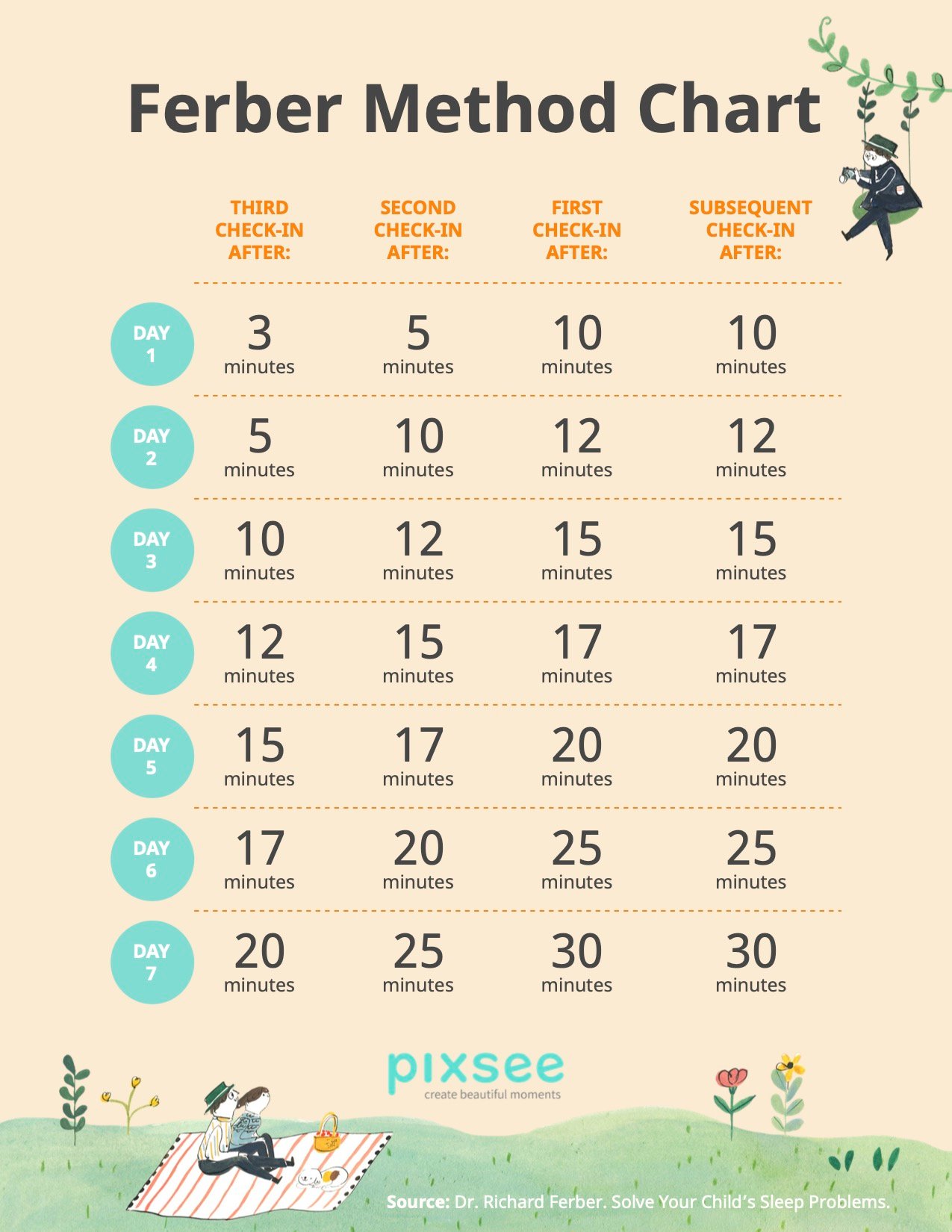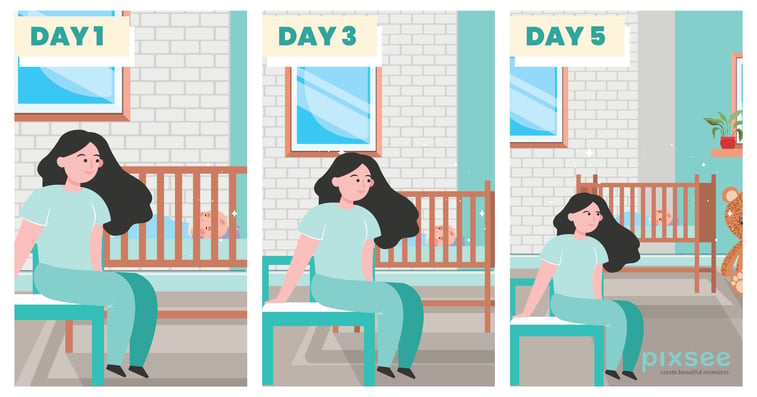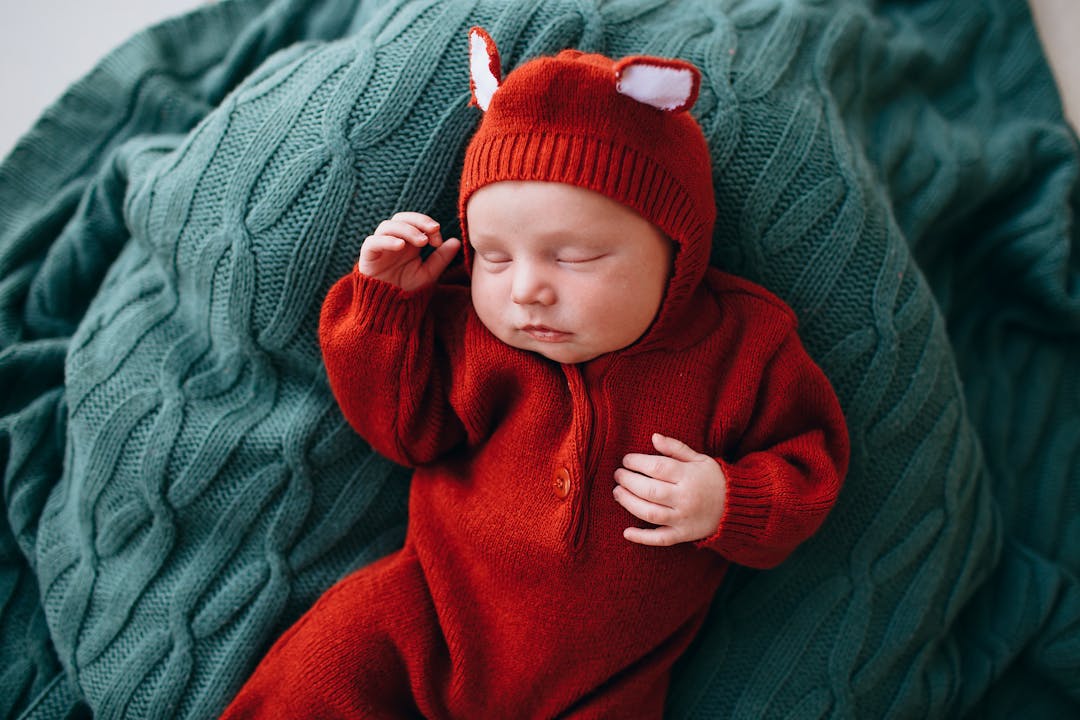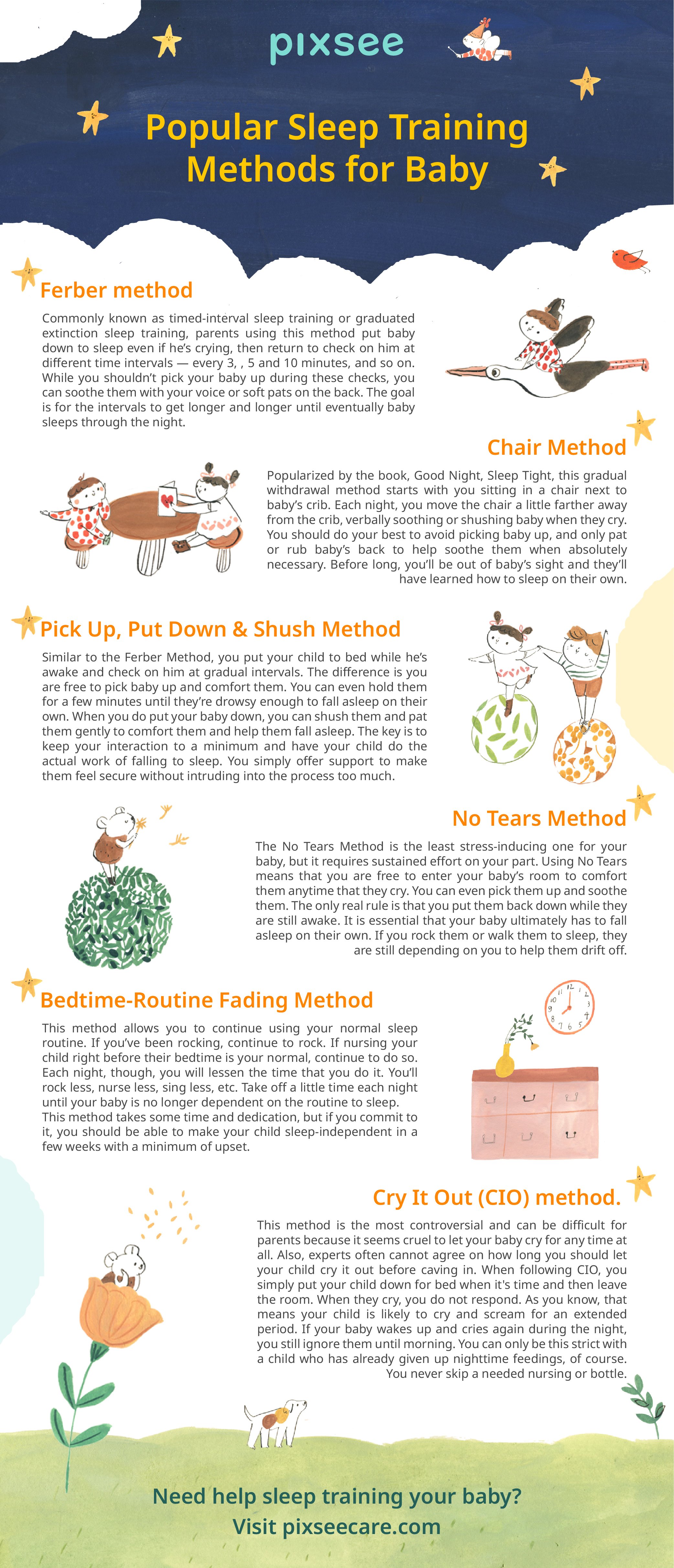New parents are usually in a state of awe and sleep deprivation. With few exceptions, newborn babies awaken their parents numerous times during the night to be fed. If you are lucky, your infant will sleep well between feedings. Even babies who start off being good sleepers may change once they hit three or four months, a common time for sleep regressions.
Their natural circadian rhythms alter their newborn sleep schedule even as their need to feed at night lessens. As a result, you may find yourself spending hours every night trying to get your child to go to sleep and stay asleep on their own. One way to achieve this goal is to embrace baby sleep training.
What is Baby Sleep Training?
Sleep training means using certain methods to train your child to self-soothe and drift off to sleep without your help. A good sleep training program also means that your child can put themselves back to sleep if they do wake up during the night. A newborn sleep schedule can turn into a demanding young baby's fitful nighttime.
Once your child is sleep-trained, you will be able to get a good night's sleep, which helps you function more effectively at home and work each day. And your baby will be on the path to thriving physically, emotionally and mentally.
When Should You Begin Baby Sleep Training?
Most experts recommend starting baby sleep training at four- to six months old. You can begin the process while your baby is still night feeding, but you do not want to begin too early. Tiny infants are not ready to go six to eight hours without food, something that is necessary for effective sleep training. If you miss this window, do not worry. It's never too late to sleep train. Older babies can still benefit from the practice, and all parents will as well.
What are the Top Sleep Training Methods
When many people think of baby sleep training, they focus on the aptly named "Cry-it-Out" method. You may imagine that all sleep training requires you to plop your baby in their crib and let them wail in fear and frustration for hours. Almost no one advocates such a drastic method, especially for babies under four months old. But letting your baby cry at least a little is part of the most popular sleep training techniques. It's a disturbing but necessary part of the process. If you are thinking about sleep training your baby, consider the following methods:
Ferber Method (Check and Console)
For a sleep method to be successful, it has to teach your baby to fall asleep on their own, which means they do not depend on you feeding or rocking them to sleep. The Ferber Method has you begin very gradually. You put your child to bed and then return at set intervals to check on them. If your baby is fussy or crying, you reassure them by the sound of your voice or by touching them gently. You might rub them on the back, for instance. Then you leave again, returning according to the schedule you've devised. The intervals may begin at one minute and expand up to ten or fifteen minutes until your baby can fall asleep without help.
The method helps your child to self-soothe while retaining the comforting benefit of your presence. Since this is a gradual process, you can expect the Ferber method to take around two weeks to complete. Some experts believe that this method is better suited for babies 7 months or older.

The Chair Method
Babies over six months may respond to the chair method. In this scenario, you complete your usual bedtime process and put your baby in their bed. You then sit down in a chair close to the crib until the baby falls asleep. You must not pick up your baby when they cry for this method to work. You repeat this process every night but move the chair closer to the door each evening. By the time you reach the doorway, your baby should be able to fall asleep on their own without needing your comforting presence in the room.
This process may take a week or more, and it may produce plenty of tears from your baby. Your child's anxiety should be manageable because they can see you and do not feel abandoned. Some babies, however, will be over-stimulated by your presence, so you may need to try another method.

Pick Up, Put Down and Shush Method
You might be able to gently train your younger baby by using this method. When you put your baby down, you can shush them and pat them gently to comfort them and help them fall asleep. The key is to keep your interaction to a minimum and have your child do the actual work of falling asleep.
If your baby's distress escalates, you can pick them up briefly, comfort them and then put them back to bed while they are still awake. You do not rock them or feed them to help them sleep. You are simply offering support to make them feel secure without intruding into the process too much.
This method may be less effective for older babies who may become more upset by this type of minimal interaction. Also, picking up a baby seven months or older may just over-stimulate them and make it harder for them to settle down.
The No Tears Method
The No Tears Method is the least stress-inducing one for your baby, but it requires sustained effort on your part. Using No Tears means that you are free to enter your baby's room to comfort them anytime they cry. You can even pick them up and soothe them. The only real rule is that you put them back down while they are still awake. It is essential that your baby ultimately has to fall asleep on their own. If you rock them or walk them to sleep, they are still depending on you to help them drift off.
Bedtime-Routine Fading Method
This method allows you to continue using your normal sleep routine. If you've been rocking, continue to rock. If nursing your child right before their bedtime is your normal, continue to do so. Each night, though, you will lessen the time that you do it. You'll rock less, nurse less, sing less, etc. Take off a little time each night until your baby is no longer dependent on the routine to sleep.
This method takes some time and dedication, but if you commit to it, you should be able to make your child sleep-independent in a few weeks with a minimum of upset.
Extinction or Cry It Out
Choosing this option can be difficult for parents because it seems cruel to let your baby cry at any time all. This method is also the most controversial one. Experts often cannot agree on how long you should let your child cry it out before caving in. Some childcare professionals do not endorse this technique at all. Many parents do swear by its effectiveness, however.
When following CIO, you simply put your child down for bed when it's time and then leave the room. When they cry, you do not respond. As you know, that means your child is likely to cry and scream for an extended period. If your baby wakes up and cries again during the night, you still ignore them until morning. You can only be this strict with a child who has already given up nighttime feedings, of course. You never skip a needed nursing or bottle.
Some experts say to leave the baby until morning no matter how much they cry. Others say to go to your child after the first or second wake-up, comfort them briefly and then leave again while they are awake. Letting your baby cry it out can be traumatic for parents and possibly for babies, although it is often effective. Many babies can fall asleep alone and without crying in three or four days when you do not respond to their nighttime crying.
What are Normal Issues with Sleep Training?
No one sleep method works for every child or every parent. Your baby may not respond well to the chair method or the CIO method. Also, sleep training can be much harder on parents than on their babies. It is emotionally difficult to listen to your child cry and not do anything to comfort them or to offer limited comfort. Probably the biggest issue with sleep training is the lack of follow-through. Many parents just give up after a night or two because sleep training seems too physically and emotionally hard.
It is not normal for your baby to cry excessively after four or five nights of sleep training. You may need to reassess your approach and switch to another method if this reaction occurs. Also, any signs of physical distress are not normal. Your baby should not be overly tired, sick to their stomach or have breathing problems during sleep training. If your baby does develop physical issues, contact your pediatrician at once.
What Can Sleep-Deprived Parents Do to Stay Motivated?
Experts suggest several ways to stay motivated during what can be a difficult period. Self-doubt is your biggest enemy. You may wonder if sleep training works or if it is harming your baby psychologically. Before beginning training, read up on why a good night's sleep is so important for your baby and you. Good physical and emotional health depends on getting enough quality sleep. Your baby will be more likely to thrive when they sleep well. Also, you will be a better parent if you are rested and healthy.
Choosing the right training method will also help you stay motivated. If you do not think you can handle Cry It Out, choose a gentler method for your child. Carefully consider what actions you'll be able to consistently apply and what you won't be able to handle. You need to be comfortable with the method to make it work.
The Pixsee Advantage
Newborn sleep schedules are demanding. Fortunately, you are not alone when it comes to monitoring your baby during sleep training. The Pixsee Smart Baby Monitor uses AI to capture quality pictures of your baby day and night during their development, capturing all the phases of their physical and mental growth.
It also has a nighthawk monitoring mode that allows you to check on your baby from elsewhere in the house. You get the reassurance that you need without visiting the nursery and disrupting the baby training method guidelines. Pixsee Smart Baby Monitor strengthens your resolve while protecting your child. You can also soothe your baby by the sound of your voice when your baby is fussy or crying.
To learn more about its additional features such as a cry decoder to decipher why a baby is upset, a smart music box that plays carefully curated music designed to inspire play or calm a restless baby, and others.
Visit our Pixsee Shop or Amazon online store to learn about the other features that make Pixsee the perfect parenting companion.








